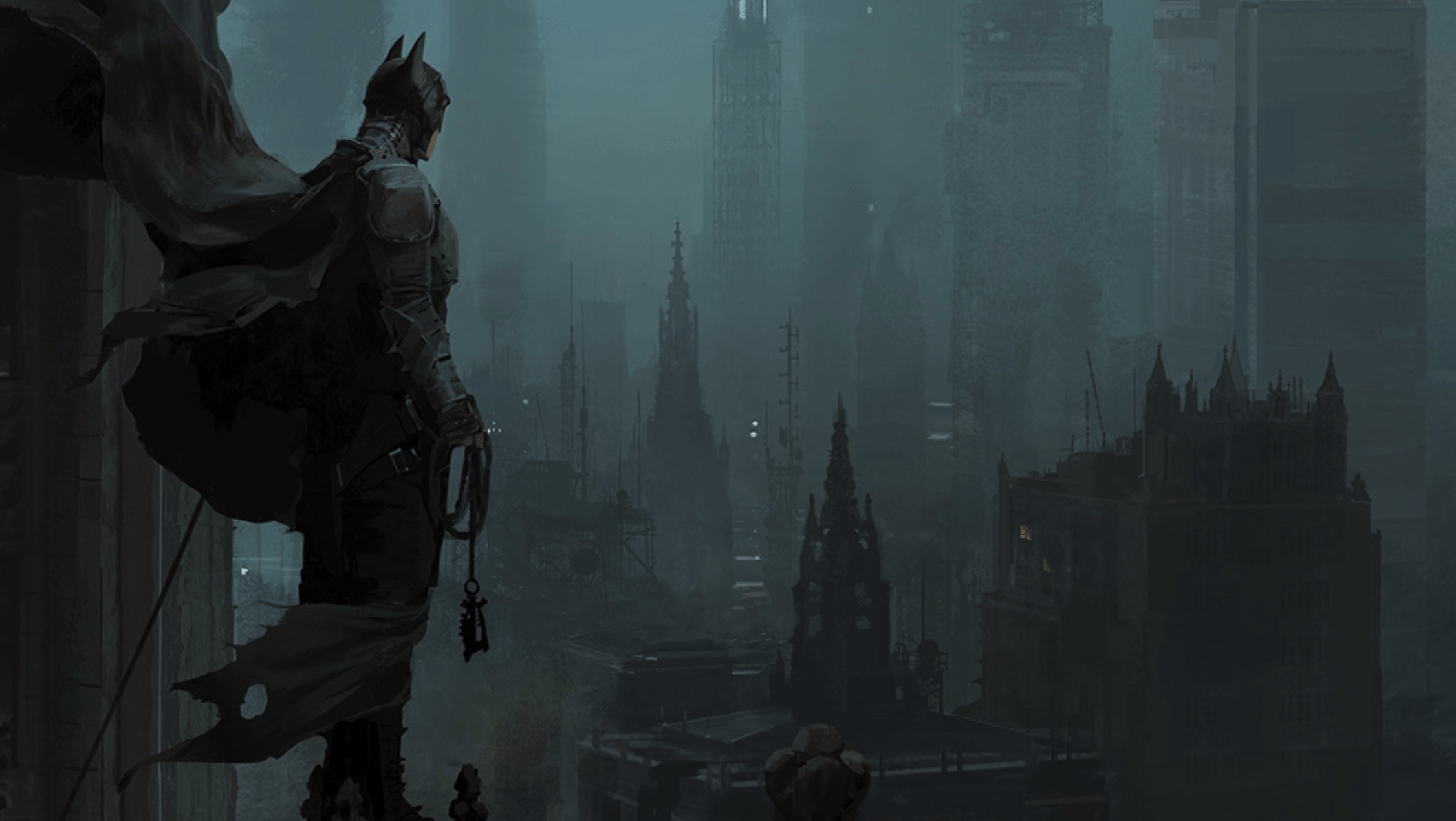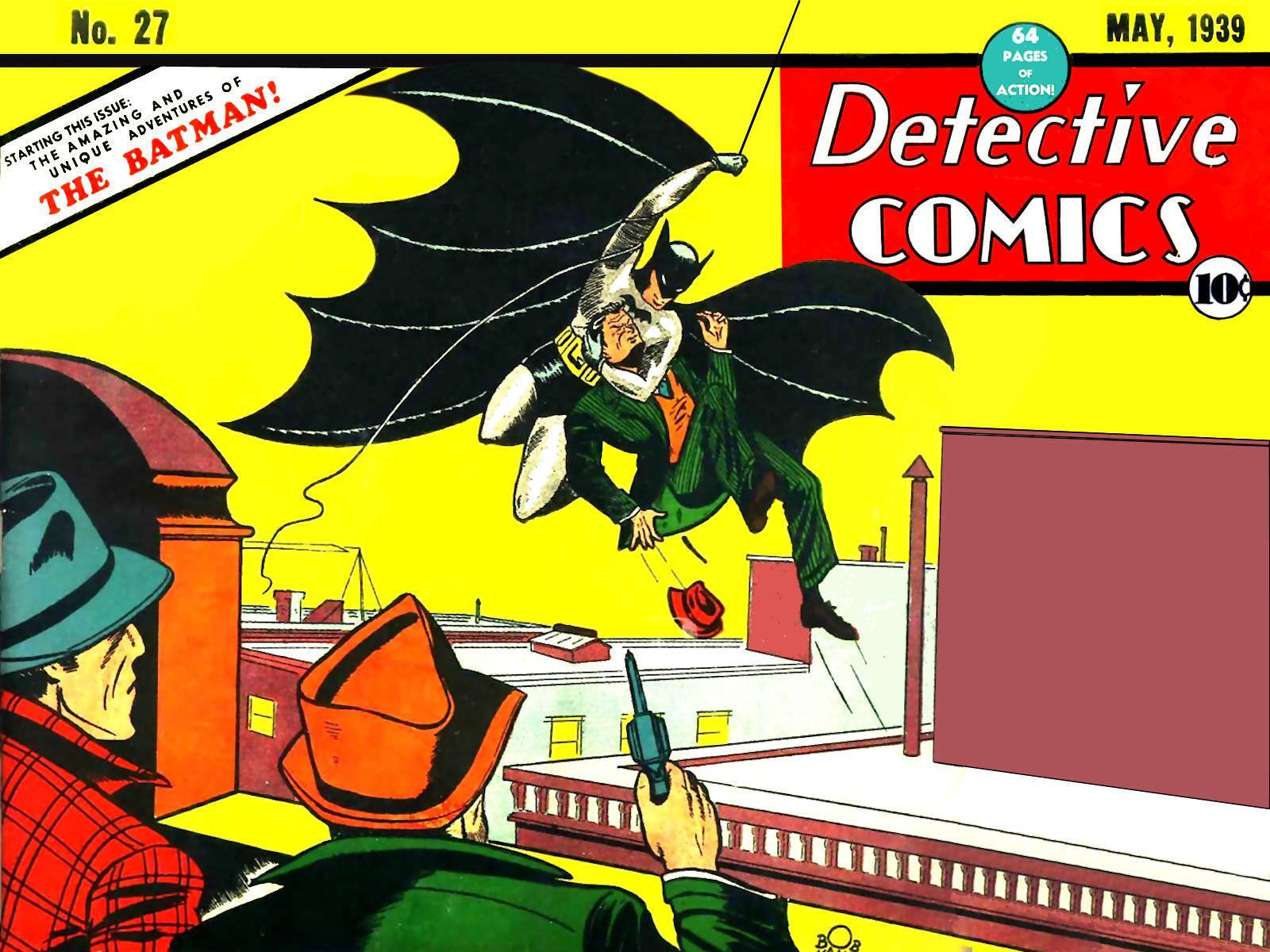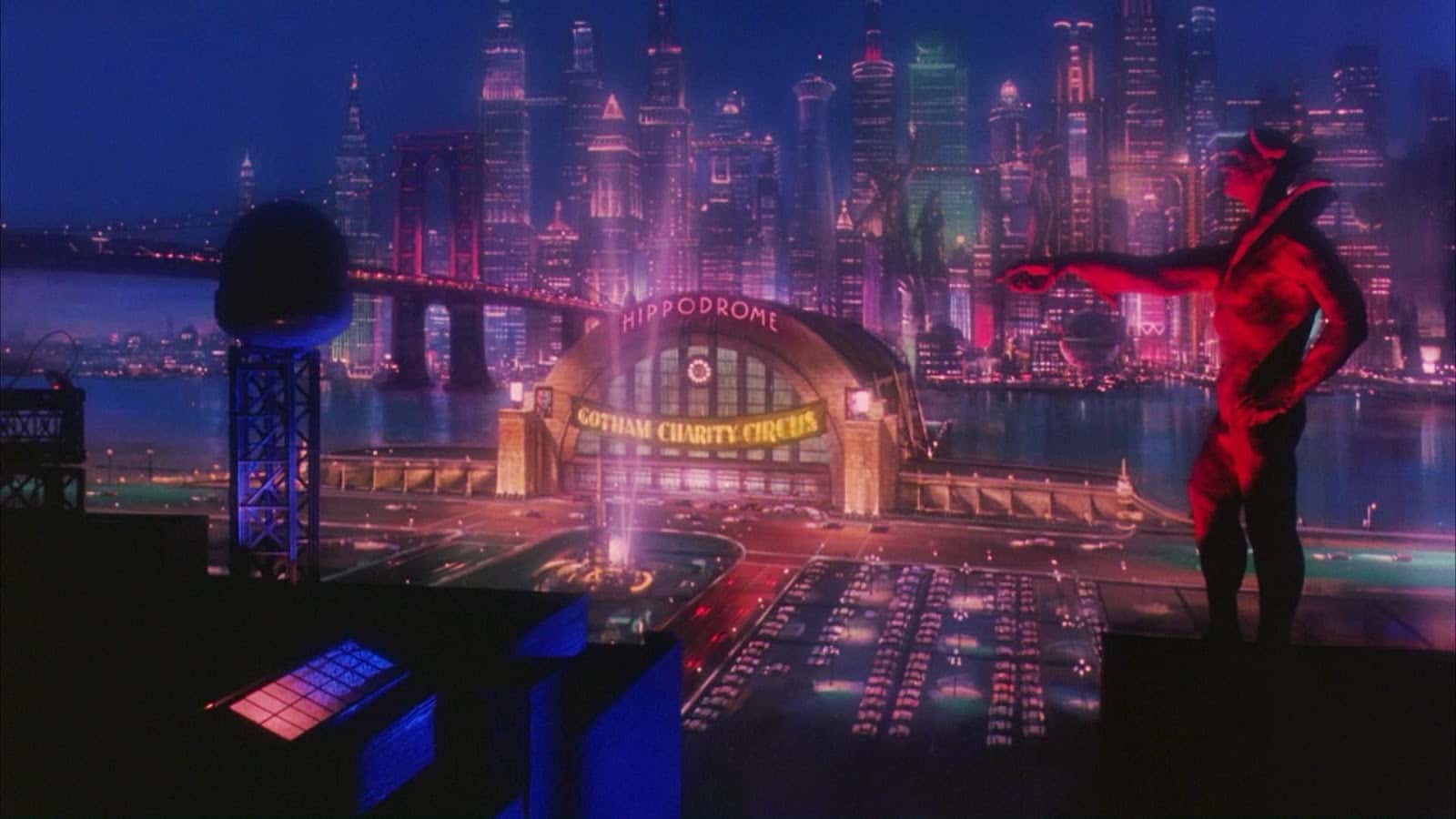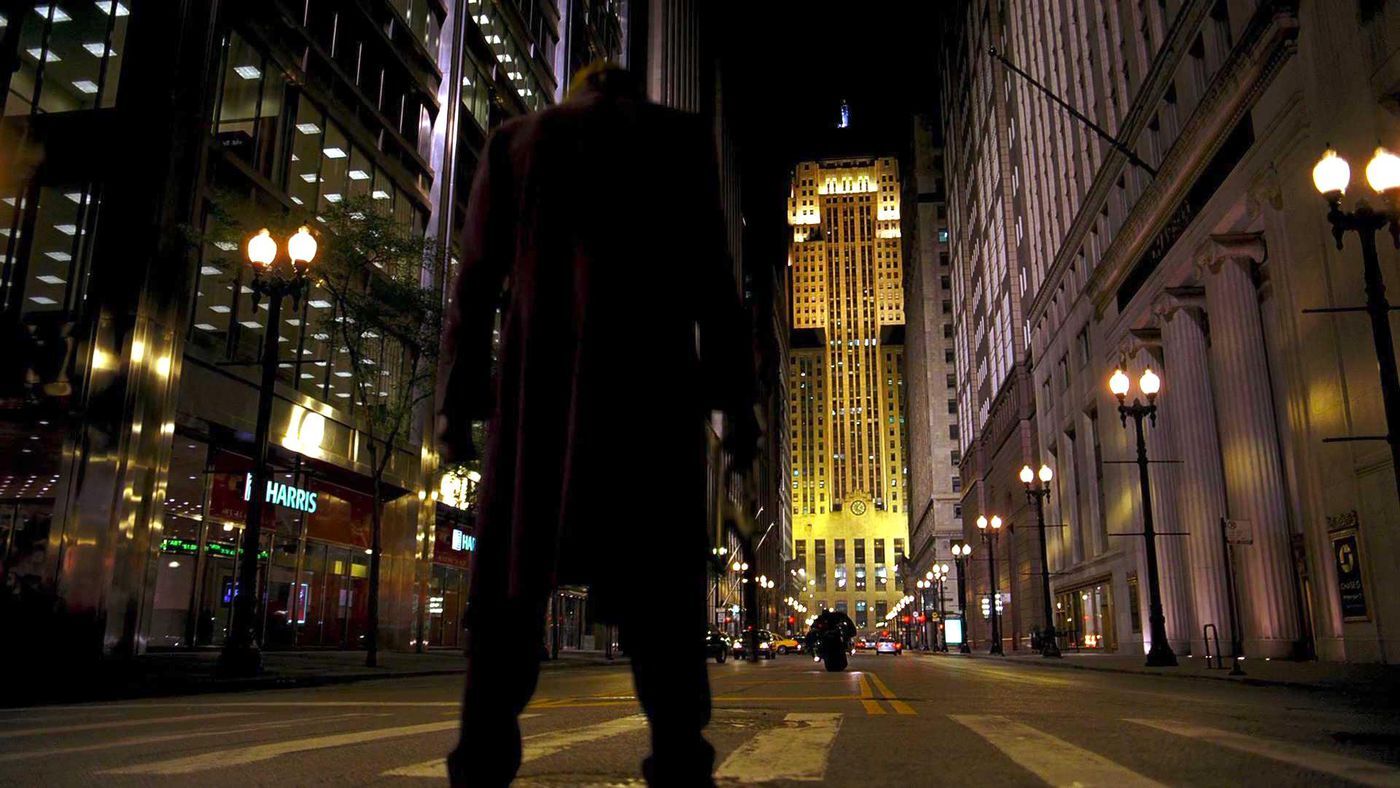The Batman, in theaters now starring Robert Pattinson, showcases another creative team’s illustration of Gotham City, the famed fictional metropolis Batman is perpetually defending from dark underbellies of crime and supervillains. “As production designers, it’s the most exciting challenge you could possibly be presented with, to create your own take on such a loved city,” production designer James Chinlund says about Gotham’s latest iteration. “At the end of the day, they all combine to create this universal Gotham.” From themes spanning Frank Lloyd Wright to Russian Constructivism to Hitchcockian noir, here’s a look back at Gotham City’s many interpretations over the years.
Tracking Gotham City’s Ever-Changing Aesthetic
In celebration of The Batman, the latest installment in the superhero franchise, we reflect on how directors have envisioned Gotham City over the years.
BY THE EDITORS
March 10, 2022


Batman (1939)
The first iteration of Batman, in 1939, was set in a fictional place resembling New York City. In his satirical literary magazine Salmagundi, author Washington Irving coined the metropolis “Gotham.” Two years later, co-creators Bill Finger and Bob Kane adopted the name Gotham City. “We didn’t call it New York because we wanted anybody in any city to identify with it,” Finger said at the time.

Batman (1989)
Director Tim Burton and production designer Anton Furst established Gotham as a grotesque, crime-infested cesspool imploding from the inside. Furst exaggerated Manhattan-like elements with a hodgepodge of jarring building styles—Italian Futurism mixed with the expressionism of Antoni Gaudi and Frank Lloyd Wright—cloaked in layers of filth and grime that brought the macabre city’s encroaching feelings of disarray to new heights.

Batman Forever (1995)
Burton’s “ink-stained” aesthetic gave way to the Joel Schumacher era, which turned back to the campier, light-hearted days of yore as part of a superhero toy strategy. His vision for Batman Forever (1995) was to create a “living comic book” that honored the Bob Kane–inspired illustrations of old. “We wanted to have something joyful, a little bit more colorful,” production designer Barbara Ling tells The Ringer. Blending references of modernist Japanese architecture with Russian constructivism, the film veered away from Burton’s gothic style. In later adaptations, the duo subbed George Clooney for Val Kilmer and instilled operatic characteristics, vibrant neon tones, and graffiti-filled sets.

Batman Begins (2005), The Dark Knight (2008), and the Dark Knight Rises (2012)
When envisioning Gotham for the Dark Knight trilogy, director Christopher Nolan broke with tradition and eschewed New York’s iconography, instead leaning into the gothic architecture and back alleys of Chicago. Nolan spent months in the Windy City and opted to shoot scenes on location there, forgoing sound stages for the city’s modernist marvels such as the Richard J. Daley Center and Board of Trade Building. Chase scenes were filmed in the city’s network of underground roads while helicopters soared between concrete canyons. “The authorities had taken back the city from the hoodlums,” production designer Nathan Crowley told Chicago, “and I felt that the clean architecture, modernist yet not super modern, communicated that idea.”

The Batman (2022)
For the franchise’s latest installment, director Matt Reeves and production designer James Chinlund set out to create a Gotham unlike any other—one that combines the winding layouts of Liverpool with the unfinished high-rises of a Manhattan-like city that has fallen on hard times. (Or as Thrillist puts it, he made Gotham gross again.) It also zooms in with scenes in apartments, clubs, and train stations, shedding light on who Gothamites are and why they choose to live in the nocturnal hellscape.